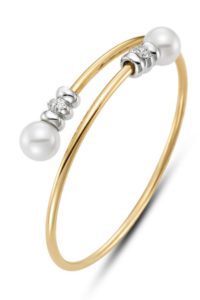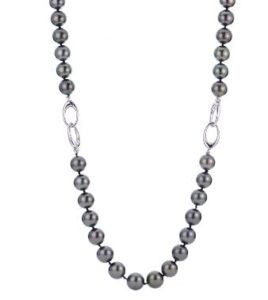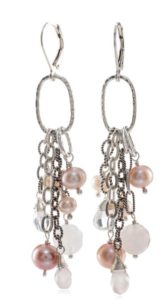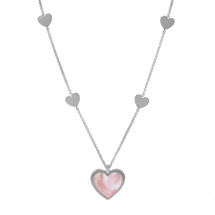Pearl Destination
If you want to be successful selling pearls, jewelers must become a destination for pearls. Developing a selection of pearls to suit your market is essential, and knowing your customers is key to creating a compelling pearl department. There is so much to choose from, you have to find the right mix for your audience.
Pearls are probably one of the easiest gems to get involved with and put together a case for a relatively inexpensive investment with the opportunity to turn a healthy profit, touts Dana Cali, marketing and communications for the New York City based pearl house Mastoloni.
Merchandise in Levels
To build a successful pearl department, merchandise in levels to cover every customer, advises Cora Lee Colaizzi, director of marketing and catalogs and senior merchandiser Quality Gold, Fairfield, Ohio.
Stock basic strands, earrings, rings and bracelets that are traditional and never go out of style,” says Colaizzi. “If you don’t have inventory in the basics, the customer will not wait for you to order it and go elsewhere.” She advocates stocking fashion styles and a well-balanced children’s line for gifting.
Cali stresses assortment not only in style and design, but also in price. “You have to have a little of both classic and fashion to keep a good balance—70/30 percent or 60/40 percent respectively—depending on your market, and representing affordable, middle and high-end prices to cover all bases.”
Create Compelling Visuals
When it comes to merchandising, it’s all about presentation and placing positive attention on your offerings, explains Kathy Grenier, vice president of business development for the Providence, Rhode Island based pearl house Imperial. She cites trade shows as an excellent venue to mine for display ideas.
“Merchandise as you suggest items be worn, don’t just arrange pieces because they go together or are sold as a set,” says Grenier. “Put concepts together for your customers—pair classic with trendy, pearls with non-pearl items. Create visuals that stop people in their tracks and start conversations.”
She advises whenever possible to get pearls into your customers’ hands. “It makes a difference! When you hold pearls there’s a warmth and life to them that draws you in. Pearls are sensual and organic; they beg to be touched.”
 Show & Tell
Show & Tell
Pearls also beg to be worn, and at least one associate on the sales floor should be adorned in them, styled with other items from stock, suggests designer Sara Blaine, a Benchmark brand partner in Atlanta, Georgia.
“Stay abreast of current trends like stacking and layering and show how people can translate the hottest looks in their own style with pearls,” says Blaine. “Show customers how they can wear pearls, especially how well pearls work with other things. Customers are looking for ideas and guidance.”
Education is the biggest key to helping consumers feel comfortable buying pearls, says Grenier, who advocates jewelers use pearl variety charts, origin maps, videos, and other sales tools to teach customers about the rarity and difficultly in producing pearls. She cites the Cultured Pearl Association as a great resource for sales and marketing materials.
Promote Pearls
Partnering with strong brands also offer sales training, special displays, coop advertising, marketing support, stock balancing, and more to help jewelers sell pearls, says Wendy Fox, senior director of sales independent division for Honora, the New York City based Richline brand. “We offer our customers a complete product kit with all our branded assets to market our merchandise.”
Colaizzi advocates jewelers create promotions and contests, suggesting a focus on pearls in June to coincide with National Pearl Month. “Provide pearls as your gift with purchase program during the month of June. Stud earrings are perfect to incorporate into a promotional idea where the consumer receives pearls as a reward for their patronage in the store. Use Facebook to get feedback on top pearl styles inviting customers to vote for the item they like best.”
Make the most of social media, says Cali. For Mastoloni, Facebook and Instagram have been very successful in engaging customers. “In looking at the analytics, I see two different groups. Followers on Facebook tend to be older, 35 to 50, and Instagram is younger, 25 to 35. But they both react the same way to the same images.” She says the tone on social media is fun and conversational and not so serious or product focused. We stress to our jewelers to enhance and elevate their content. There are really no boundaries to what they can talk about, especially when customers get involved.”







